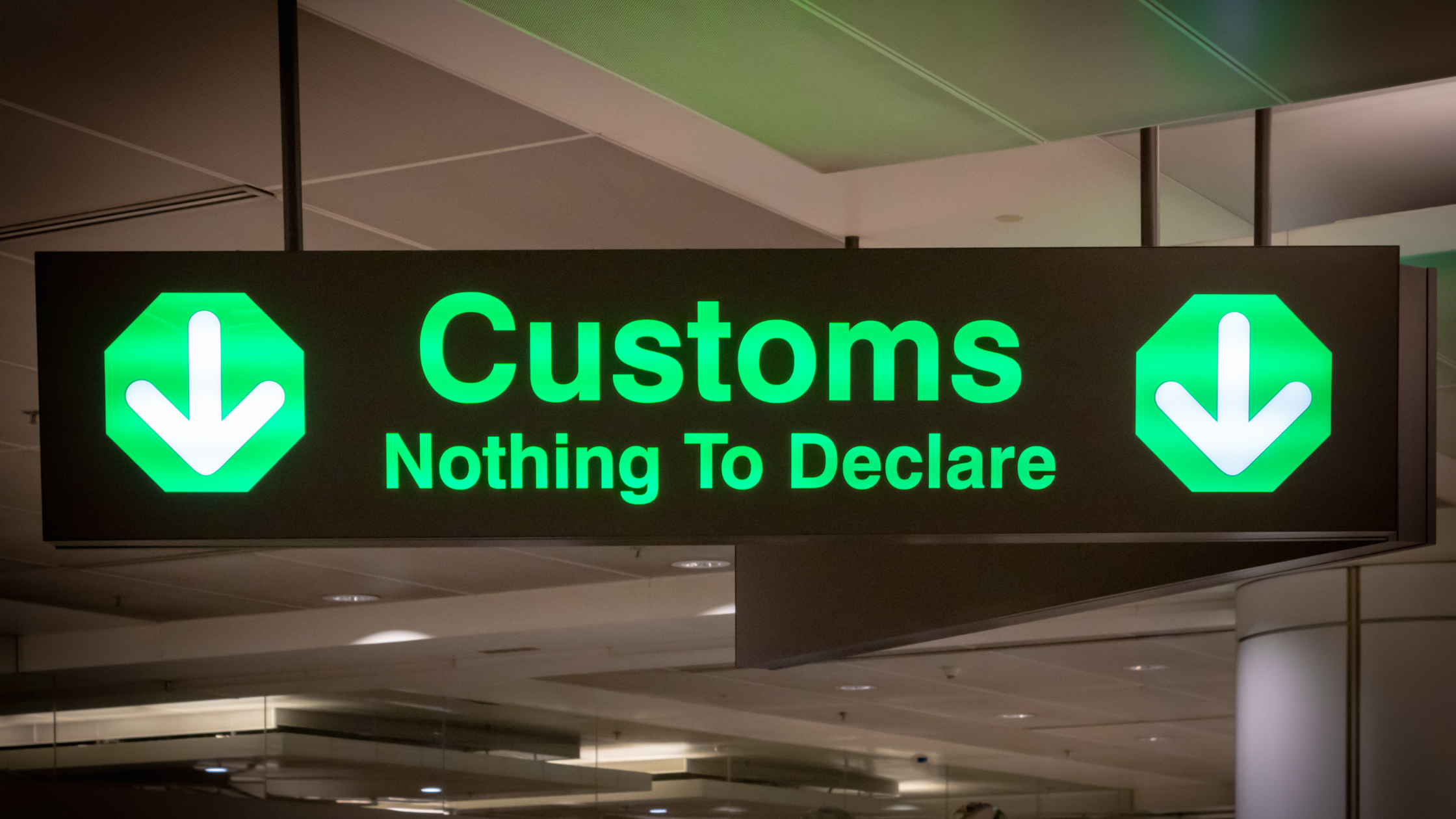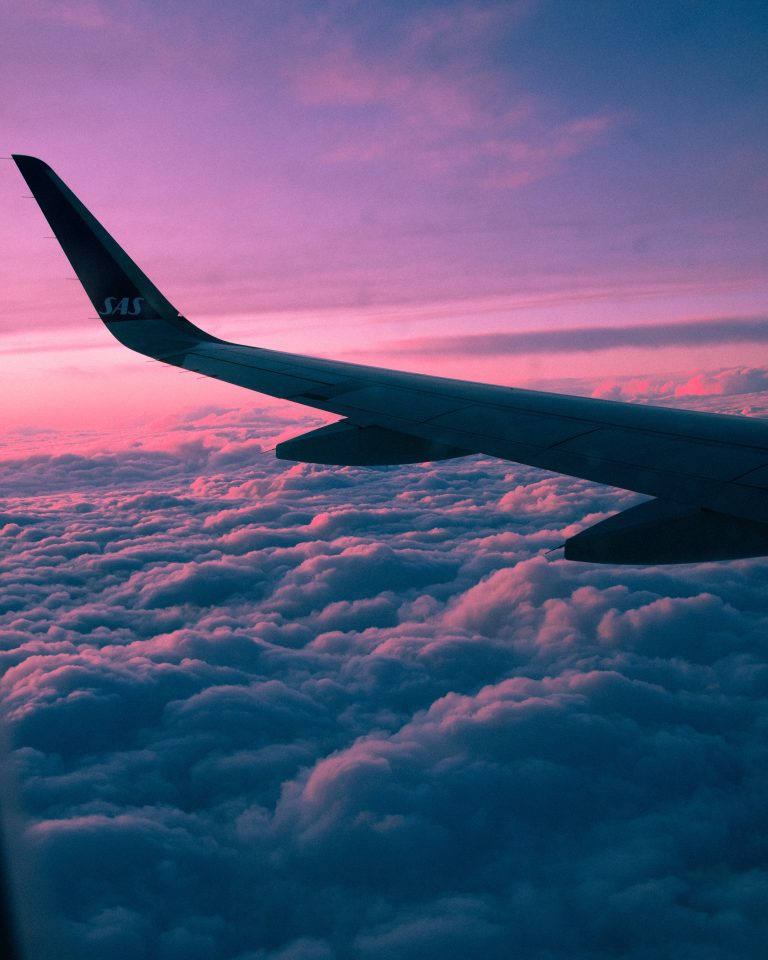Do You Have To Go Through Customs On A Layover?
Flying with a layover can be incredibly stressful because every region and country has its own rules.
While you will likely get clear instructions locally at the airport, it is still good to be prepared and know what to expect.
As a digital nomad who has been traveling for as long as I can remember, I have done extensive research on airport transits, visas, customs, and immigration.
Stay with me and I will show you everything I have learned throughout the years.
Do You Have To Go Through Customs On A Layover?
A lot of travelers, even experienced ones, confuse customs with security checks. Every time you board a flight, you will be going through a security scan for liquids or other unauthorized items. This process is NOT customs. It is a standard procedure at every airport for safety purposes.
Customs declarations specifically refer to going through an area, which usually consists of a red lane and a green lane, to declare restricted items you are carrying. It is about the items you are bringing into the country for legal purposes. You may be given a physical card to fill out as well. Each country operates differently so we will take a look at the top 3 countries for layovers.
International Flights
United States
In the US, customs are required for all international flights. Whether your final destination is the US or not, you have to go through customs at your first port of entry. You have to collect your bags and check them in again for your connecting flight.
It is possible to get preclearance in 16 locations around the world, including Ireland. That way, you can skip the lengthy declaration process and head straight to the exit.
Europe
If you are traveling among Schengen member states, you do not need to go through customs on a layover. But, if you are coming into the Schengen area, you will have to clear customs in your layover. For example, passengers flying from the US to Spain via France will go through customs in France, not Spain.
On the other hand, if you are leaving the Schengen area, e.g. from Spain to the UAE via Germany, you will only need to get customs clearance in the UAE.
United Kingdom
You only need to make a customs declaration when collecting your luggage and exiting the airport, which can happen for self-transfer flights. If your luggage is checked all the way to your final destination, there is no need to go through customs.
Domestic Flights
No. You do not have to go through customs at all for domestic flights, regardless of how many layovers you have. It is because you are still in the same country. Customs requirements are strictly for when you cross the border into another sovereign country.
The purpose of customs is to make sure you aren’t carrying anything illegal across the border. Each country has its own law so a legal purchase in one country may be illegal in another. That’s why customs are in place to stop the import of banned goods.
Since you are not crossing the border on domestic flights, there is no need to go through customs.
Do You Go Through Passport Control On A Layover?
International Flights
United States
The US operates differently from most countries. There is no international transit area in the US. Therefore, you are officially in the US territory once the plane lands and you will need to obtain an appropriate visa beforehand.
Whether your final ticketed destination is in the US or not, you will go through passport control. You can only carry on to your next flight after customs and immigration.
Europe
Europe is tricky because of the EU and Schengen Zone. Despite the procedures being mostly simpler than when traveling in the rest of the world, they can be confusing for visitors.
Flying within the Schengen Zone is the easiest. You do not need to pass through immigration going through member states.
However, if you are coming into an EU or Schengen country via another EU/Schengen country, you need to go through passport control at the layover destination before flying off to your final destination.
For passengers leaving Europe via another EU/Schengen country, e.g. from Germany to the US via Spain, you do not need to go through a passport check in Spain.
United Kingdom
Ever since Brexit, the UK rules can be daunting for EU travelers in fear of how it will impact their travels. There’s no need to be afraid as the UK has a standardized rule for layovers. You will not be clearing border control unless you are collecting your bags and re-checking in for your next flight.
You will go through a security check in the transit area to make sure you are in fact the passport holder carrying on your journey but it is not an immigration counter.
Domestic Flights
Passport check for domestic flights differs from typical border control. When you check in for your first flight, you will still go through a security gate to present your travel document. But at this point, this measure is to confirm your travel ID to make sure you are who you say you are.
Most countries will not be validating or checking your visa for domestic flights, meaning you can still fly domestically with an expired visa. Visa violations are only checked when you exit the country to an international destination. Still, you should never travel with an expired visa as it can bring serious legal consequences. This applies to all local transfers.
How Do You Go Through Customs On International Flights?
Some countries may have various procedures for customs declarations but you will generally go through these steps. Sometimes, the order of these procedures differs, so it’s best to follow the signs at the airport or seek ground staff for support.
- Make your way to the international transit area and go through passport control if necessary
Once you arrive at your layover destination, follow the signs and head to the customs and immigration area. If you do not need to go through customs or immigration, the signs will take you directly to your connecting flight’s gate where you can calmly wait for your next departure.
- Fill out the customs declaration form
If you need to go through customs, you will probably be given a physical or e-form to fill out to confirm that you are not carrying any illegal items into the country.
- Baggage inspection
Your baggage will be screened by local authorities. The search is usually conducted with a digital scanner. However, if the officer believes you have unauthorized items in your belongings, they may ask you to open your bag for further inspection.
Random inspections may happen where you will follow the inspector to another area for a detailed search through your luggage. It’s important to note that this does not necessarily mean you look like a criminal or they believe you are carrying anything illegal in any way. The selected search can be entirely random for security purposes.
An officer will ask you to open your suitcase and may lead you to a separate, private area so an officer of your gender can conduct a body search. You won’t be asked to remove all your clothing but the officer may pat through your body, including sensitive areas.
However, in all cases, the security officer should not make you feel uncomfortable or violated. If something doesn’t feel right, you need to report it immediately to another staff member.
- Head to the international check-in counter
If you need to check in again, like in the US as mentioned, you have to go to the international check-in counter, which is separated from the check-in desk in the main hall. The international check-in counter is specifically designed for foreign tourists flying into the country via a city in the same country.
- Find your gate
That’s it. All you have to do now is to find your gate and get ready for the takeoff!
How To Know If You Have Goods To Declare?
Relevant information can be found on each country’s immigration website, airport information counter, and airline guidelines. Certain dangerous goods, such as firearms, are banned globally.
Controversial items, like ivory products, may be banned in your transit destination but not your final destination. However, you may not be able to bring it on your next flight if you have to go through customs on your layover.
In case you are unsure about prohibited goods, contact the authorities at the local destination. They will be able to provide the most up-to-date information.
How Long Does It Take To Go Through Customs?
Depends. Long queues, staff shortage, strikes, extreme weather conditions. There are a lot of factors influencing the time frame. A lot of international airports are extremely congested due to the large volume it handles daily, e.g. the Beijing International Airport is notoriously slow with customs procedures because of the influx of transit visitors.
The whole process can take anywhere between 10 minutes to an hour, possibly longer if you have been selected for a detailed search. It is always advised to clear customs and immigration as necessary once you land to ensure you have enough time.
Ground staff are usually attentive and will give priority access to passengers with an urgent flight, e.g. in the next 20 minutes. You can ask for assistance and may be able to skip the queue if you are about the miss your flight.
Can You Leave The Airport During A Layover?
Again, the answer is not as black and white here.
I have covered this topic in another in-depth article about airport layovers.
For the most part, there is nothing stopping you from leaving the airport during a layover, given that you hold the appropriate visa to do so.
Just be careful that if you decide to leave the airport, you should come back at least 2.5 to 3 hours before your next flight as you normally would for any flight. Missing your flight with your suitcase on it is no fun!
What Should You Bring For Your Layover?
When you are traveling, there are several essentials you will want to keep with you as carry-ons.
Passport + Personal belongings
This goes without saying but sometimes, mistakes can happen. Therefore, writing a checklist of all the absolute essentials and crosschecking the list each time will help you minimize these “silly” mistakes.
You must keep your passport, wallet, and physical visa details (if necessary) with you. Electronic devices such as laptops should stay with you on the flight as they might get damaged easily.
Airplane neck pillow
Good neck support changes the game entirely for long-haul flights. It is such a small item that can give you the best sleep. The pillow can be easily stored in a tiny backpack or hung outside of your bag.
Boarding pass
You must keep your boarding pass with you at all times, especially when you head to your connecting flight. You will have to show your boarding on a layover to go through security and passport control.
If you happen to lose your boarding pass, you can get it reissued at the transit airport. You have to go to the airline counter with your passport and booking details so the staff can assist you.
Outbound ticket
Certain countries require proof of return tickets or a one-way outbound ticket at border control to ensure your intention to leave the country. Therefore, airlines will ask for your outbound ticket when you check in for the first flight.
For self-transfer flights, you will be asked for proof again when you check in for your second flight. It is handy to keep your outbound ticket accessible at all times.
Travel Insurance
During COVID-19, there was mandatory travel insurance in place in some places like Thailand. Without the appropriate coverage, you were not allowed to transit in the airport.
Even though most parts of the world have removed relevant regulations, certain countries still have insurance-related measures in place, even if they are not COVID-related. You can check with your airlines for the most updated information.
Proof of vaccination
Some countries will require proof of vaccinations at the border control before you can collect your luggage. One example is the yellow fever vaccination requirement in Bolivia for visitors coming from Peru. So, you will want to keep your vaccination card with you to avoid any inconvenience.
Do You Have To Check In Your Luggage Again On A Layover?
Not always but it can happen. If you are flying with the same airline, you won’t have to check in your luggage again on a layover unless the country requires it. Like in the US, you must collect your luggage for inspections at your first port of entry. Then, you will check in your baggage again for your onward flights.
You may only get the second boarding pass at the layover destination as well. That’s a clear sign that you have to check in again.
Fortunately, in most places, your suitcase will be waiting for you at your final destination. When you purchase your tickets, you can ask your airline for relevant information.
What Is The Layover Time For International Flights?
Usually, international flights will have a minimum of 2 hours for transfer to ensure a seamless transition and you won’t miss your flight. Any layovers under an hour would be too tight. When you are buying tickets separately, be sure to leave a spacious gap between your first flight and your connecting flight.
How To Know If You Need A Transit Visa?
The best way is always to contact the official authorities or your airlines for clarification. The airline will give you reliable information as they will not permit you to board the plane if you do not meet the visa requirements.
You can check if you need a tourist visa to travel to the layover destination. If it’s visa-free for normal travel, then you won’t need a visa to transit.
To apply for a transit/tourist visa, go to the country’s immigration site for details. You will need to have the visa approved before your departure. Most transit visas last up to 48 hours, giving you plenty of time to explore the city while waiting for the next flight.
Conclusion
Even though the customs rules vary, you should have gotten a clearer understanding by now.
I’ve covered some of the most popular transit destinations for you.
Remember, when you are in doubt, contact the authorities because they are here to help!






